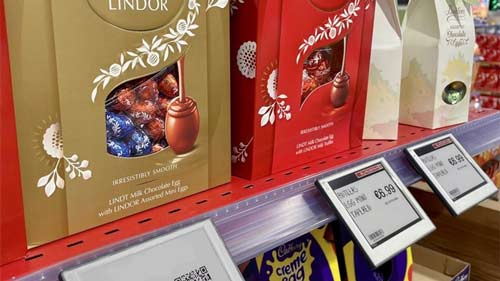
Customer experience plays a crucial role in influencing brand loyalty as well as client satisfaction in the retail sector. As customers’ demands, interests, and expectations tend to change constantly, it can be difficult for businesses to provide exceptional customer service and develop brand loyalty. Keeping this in mind, retailers are attempting to improve the in-store experience by using digital components. Supermarkets can make a seemingly simple change by installing an electronic shelf label – that, when implemented, has a surprisingly significant effect on revenue, customer satisfaction, and workplace morale.
But before we jump into how ESLs are influencing customer experience, let’s take a look at what electronic shelf labels are and what their common benefits are in the retail sector.
A Brief Overview of Electronic Shelf Labels
Early in the 1990s, a new method of in-store pricing emerged in the retail industry that had a liquid crystal screen like a calculator. Electronic shelf labels were mostly used for displaying the price because they had a limited range of digits they could display. The technology’s later developments employed electronic paper, which could be used for more contemporary and efficient radio communication in addition to infrared communication. With ESLs, each time a price is modified under the authority of a central server, the price of the product is updated automatically.
Using ESLs for the supermarket
When supermarket chains move from paper labels to electronic shelf labels, they immediately save extra manual labour and expenses. Reduced labour expenses also result in significant savings because there is no longer any need for sheets of printed labels. Workers would have to browse through the shop, taking old price tags and putting the new ones on using conventional shelf labels. Moreover, these overtime expenses are brought on by disruptions, diversions, and even after-hours work. All of these adjustments can be regulated from the backend and implemented simultaneously across all locations with the use of electronic shelf labels.
The store’s network may be accessed by the battery-operated electronic shelf label, which makes it possible to update prices and other promotional information extremely fast. Moreover, you can use this time that employees would have otherwise spent replacing conventionally printed pricing labels and product details to assist consumers directly and provide them with a satisfying overall in-store experience.
Get In Touch With Your Clients
These developments significantly impact the client base as well. Supermarket chains can either immediately pass on the cost savings from electronic shelf labels to the consumer or use them to improve the customer experience in plenty of other ways. The staff can concentrate more on guiding customers toward the necessary goods. Additionally, thanks to the improved labelling, customers may more quickly find what they’re looking for.
Retailers can even add icons to digital labels to help customers find the products they want to purchase. Electronic labels can aid in designating which items are heart-healthy, organic, or non-GMO as well. Customers can also use QR codes to access additional product details, limited-time deals, “Save to Wishlist” features, and other features, creating a cutting-edge and practical in-store experience. The cumulative effect of all these little extras makes grocers stand out and encourages clients to return.
Getting a higher return on the investment
Electronic shelf labels can potentially raise employee productivity in addition to reducing costs and improving the customer experience. Implementing ESLs will optimise the overall responsibility of the employees to the point where they can take on more significant tasks inside the store. Additionally, it enables them to skip the tiresome process of manually updating the shelf labels. This is significant to keep in mind since you need to be sure that you will get a quick return on your investment because changing to the new retail technology might turn out to be expensive initially.
What are the common aspects of using ESLs in the retail sector?
Using ESLs not only improves the customer experience but also helps the grocers. With that being said, here are the common reasons why retailers are inclined towards digital price tags more proactively today.
1. Additional product details could be displayed
More varied information may now be displayed on an e-label thanks to advancements in ESL technology, allowing you to display details other than the item’s price. The merchant can include this information on the primary label or print a QR code to access more information via the store’s website or mobile app.
2. Less time-consuming and more accurate
Electronic pricing is more precise and simpler to use, saving the time spent by employees updating labels, which is a laborious task.
3. Greater ROI
Although it is necessary to make the initial investment, after installation, your personnel won’t be occupied with time-consuming activities like updating price tags. You can simply control price changes throughout the entire store easily with a central server.




